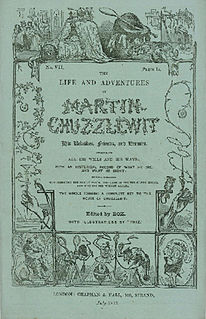 W
WAmerica Right or Wrong: An Anatomy of American Nationalism is a 2012 book by the British author and academic Anatol Lieven. A separate, earlier version was published in 2004.
 W
WAn American Dilemma: The Negro Problem and Modern Democracy is a 1944 study of race relations authored by Swedish economist Gunnar Myrdal and funded by Carnegie Corporation of New York. The foundation chose Myrdal because it thought that as a non-American, he could offer a more unbiased opinion. Myrdal's volume, at nearly 1,500 pages, painstakingly detailed what he saw as obstacles to full participation in American society that American blacks faced as of the 1940s. Ralph Bunche served as Gunnar Myrdal's main researcher and writer at the start of the project in the fall of 1938.
 W
WAmerican Notes for General Circulation is a travelogue by Charles Dickens detailing his trip to North America from January to June 1842. While there he acted as a critical observer of North American society, almost as if returning a status report on their progress. This can be compared to the style of his Pictures from Italy written four years later, where he wrote far more like a tourist. His American journey was also an inspiration for his novel Martin Chuzzlewit. Having arrived in Boston, he visited Lowell, New York, and Philadelphia, and travelled as far south as Richmond, as far west as St. Louis and as far north as Quebec. The American city he liked best was Boston – "the air was so clear, the houses were so bright and gay. [...] The city is a beautiful one, and cannot fail, I should imagine, to impress all strangers very favourably." Further, it was close to the Perkins Institution and Massachusetts Asylum for the Blind where Dickens encountered Laura Bridgman, who impressed him greatly.
 W
WDe La Démocratie en Amérique is a classic French text by Alexis de Tocqueville. Its title translates as On Democracy in America, but English translations are usually simply entitled Democracy in America. In the book, Tocqueville examines the democratic revolution that he believed had been occurring over the previous several hundred years.
 W
WLiving My Life is the autobiography of Lithuanian-born anarchist Emma Goldman, who became internationally renowned as an activist based in the United States. It was published in two volumes in 1931 and 1934. Goldman wrote it while living in Saint-Tropez, France, following her disillusionment with the Bolshevik role in the Russian revolution.
 W
WThe Life and Adventures of Martin Chuzzlewit is a novel by Charles Dickens, considered the last of his picaresque novels. It was originally serialised between 1842 and 1844. While he was writing it Dickens told a friend that he thought it was his best work, but it was one of his least popular novels.
 W
WOur Cousins in Ohio is an account of a year in the life of a Quaker immigrant family in Ohio in the 1840s, written by Mary Botham Howitt. It is based on letters from her sister Emma Botham Alderson (1806–1847), who left England in 1842 with her husband, Harrison Alderson (1800–1871), and three children, William Charles (1837–1914), Agnes (1839–1925), and Anna Mary (1841–1934). In the Preface, Howitt describes Our Cousins in Ohio as a "companion volume" to The Children's Year (1847), which had documented, in a similar way, a year in the life of her own two youngest children, Margaret and Charlton Herbert.
 W
WThe Promised Land is the 1912 autobiography of Mary Antin. It tells the story of her early life in what is now Belarus and her immigration to the United States in 1894. The book focuses on her attempts to assimilate into the culture of the United States. It received very positive reviews and sold more than 85,000 copies in the three decades after its release. The book's popularity allowed Antin to begin speaking publicly, a platform that she used to promote acceptance of immigration to the United States. It was criticized by anti-immigration activists, who did not see Antin as an American. It was also criticized by some Jews, who felt that she was disrespectful towards her Jewish heritage.
 W
W"The White Man's Burden" (1899), by Rudyard Kipling, is a poem about the Philippine–American War (1899–1902), that exhorts the United States to assume colonial control of the Filipino people and their country. Originally written to celebrate the Diamond Jubilee of Queen Victoria, the jingoistic poem was replaced with the sombre "Recessional" (1897), also a Kipling poem about empire.